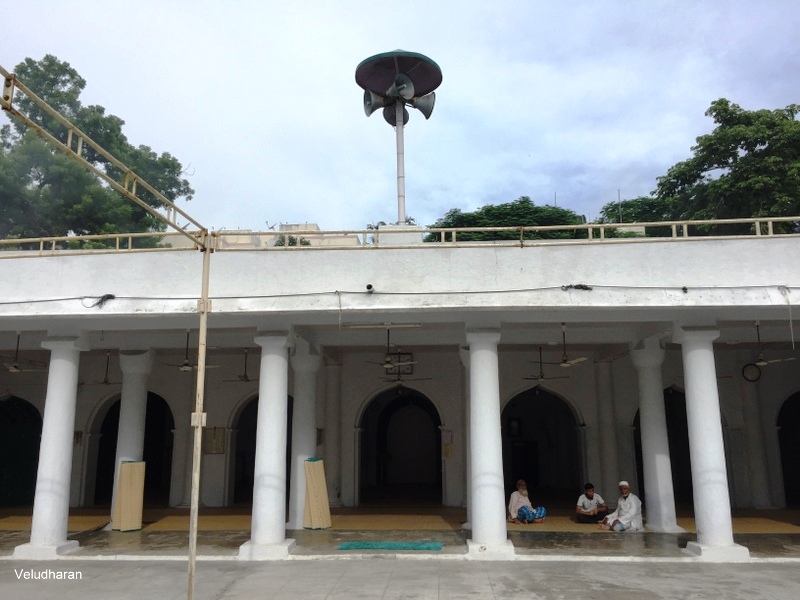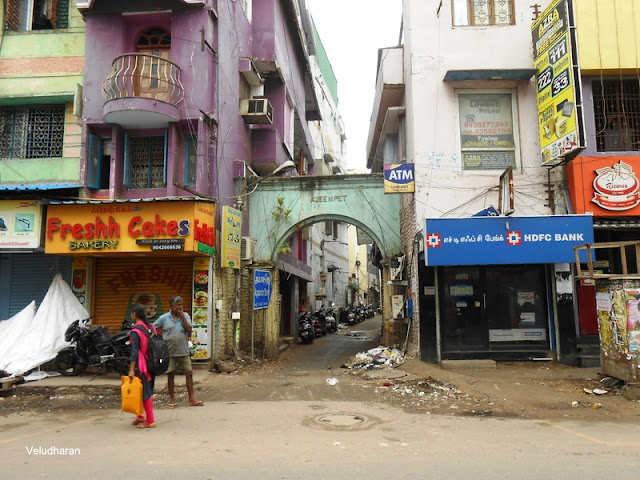…a continuation post to The Arcot Nawabs Trail at Triplicane - A Heritage walk with Kombai S Anwar - PART -III ( WALLAJAH BIG MOSQUE )
21th August 2017.
Finally reached our last stop of our Heritage walk at Amir Mahal on Bharathi Salai, Royapetah. After the death of the last Nawab in 1855, the Khalas Mahal was heavily in debts. The British took over the Palace and Nawab’s successors moved to Shaadi Mahal. After British recognized, the Prince of Arcot and moved to this Amir Mahal. The Mahal is like a mansion, has about 300 and odd rooms. The present prince of Arcot Mohummad Abdul Ali with his three brothers still lives in Amir Mahal. The present Prince of Arcot enjoys the privileges as a rank of state Cabinet Minister by the Govt of India.
The Amir Mahal is about 300 meters off main road with an entrance arch. Cannons are lined up on the right side of the Amir Mahal portico. We are allowed to visit the ground floor lounge, First floor Durbar Hall and Dining hall. The Amir Mahal, display contains the Photos of Nawabs taken with important personalities, paintings of former Nawabs, who holds power, arts, rifles and palanquin ( at the ground Floor lounge ) etc. The durbar hall is beautifully decorated and the walls are adorned with paintings of former Nawabs.
We were also allowed take photographs and Mr Kombai S Anvar asked us not to post in any media. After thanking the staffs, wounded our "The Arcot Nawabs Trail at Triplicane" heritage walk. After the Heritage walk we landed at Rathna café for our break fast. Disbursed after thanking Kombai S Anvar for the excellent Heritage walk and said good bye to all participants, hoping to meet in the next opportunity.
LOCATION:CLICK HERE
Canons on the left
End of The Arcot Nawabs Trail at Triplicane.

































